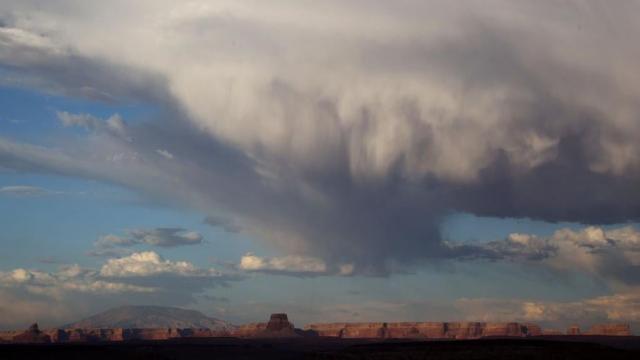The European Union is calling for international talks on a potential worldwide framework on how to treat and regulate deliberately atmosphere-altering tech, aka geoengineering.
In a statement released today, the European Commission argued that the risks and long-term impacts of geoengineering aren’t well understood and that necessary regulations haven’t been developed. “[The tech] could also increase power imbalances between nations, spark conflicts and raises a myriad of ethical, legal, governance and political issues,” the commission wrote.
“Nobody should be conducting experiments alone with our shared planet,” Frans Timmermans, the European Union climate policy chief, said according to Reuters. “This should be discussed in the right forum, at the highest international level.”
There’s a reason why global leaders are worried about environment-altering projects going unchecked. Geoengineering describes new technologies and strategies that are used to help lower global temperatures. They include carbon capture projects, but a lot of that tech is relatively new and isn’t always effective (and sometimes backed by big oil). Some geoengineering proposals are kind of alarming and feel like something out of a sci-fi horror film. This is especially true for solar radiation modification ideas, projects that seek to block the sun’s rays from reaching the planet.
Earlier this year, a group of researchers at Harvard and the University of Utah proposed a solution to shoot millions of tons of moon dust into Earth’s orbit to partially block out the Sun’s rays every year. An explosion on the moon that has catastrophic implications for the globe is actually the plot of a book series titled Life As We Knew It by Susan Beth Pfeffer. Spoiler — everything went to hell and people died.
Some suggestions have been pretty cool concepts in theory. Last year, a team of researchers at the Massachusetts Institute of Technology announced an idea that included engineering a huge raft of “bubbles” that would be sent into outer space. The raft would sit between the Earth and the Sun and would be big enough to deflect sunlight away from the planet to slow down global warming. But sending rockets into space also creates emissions that will contribute to the overall problem.
“Geoengineering might be our final and only option. Yet, most geoengineering proposals are earth-bound, which poses tremendous risks to our living ecosystem,” an MIT web page explained. Which, hey, it’s cool in theory. But when would we have the technology (and the funding) to send a bubble raft into space?
And some forms of geoengineering have already been utilised in the U.S. Colorado’s “Weather Modification Program” has used cloud seeding to boost snowfall. This is when silver iodide particles are released into clouds to promote the generation of ice particles, which then turn into falling snow. Earlier this year, the Southern Nevada Water Authority accepted a more than $US2 million grant to support more cloud seeding in Western states, the Associated Press reported. But this form of geoengineering requires specific conditions — it has to already snow for this to work, and there needs to be enough humidity in the atmosphere.
None of this is to say that the creativity used in geoengineering concepts isn’t cool. But why not simply hold fossil fuel companies accountable for achieving record profits at the expense of the rest of us? And the EU isn’t the first government to push for stricter regulations. This January, Mexico’s government moved to ban solar geoengineering projects in the country after the startup Make Sunsets claimed that it released weather balloons filled with sulphur dioxide particles in the Mexican state of Baja California Sur. The sulphur dioxide particles are reflective and were supposed to block sunlight. However these particles could contribute to acid rain and can irritate people’s lungs, The Verge reported. A few balloons may not cause those problems, but the company conducted this experiment without any sort of approval from Mexican authorities.
